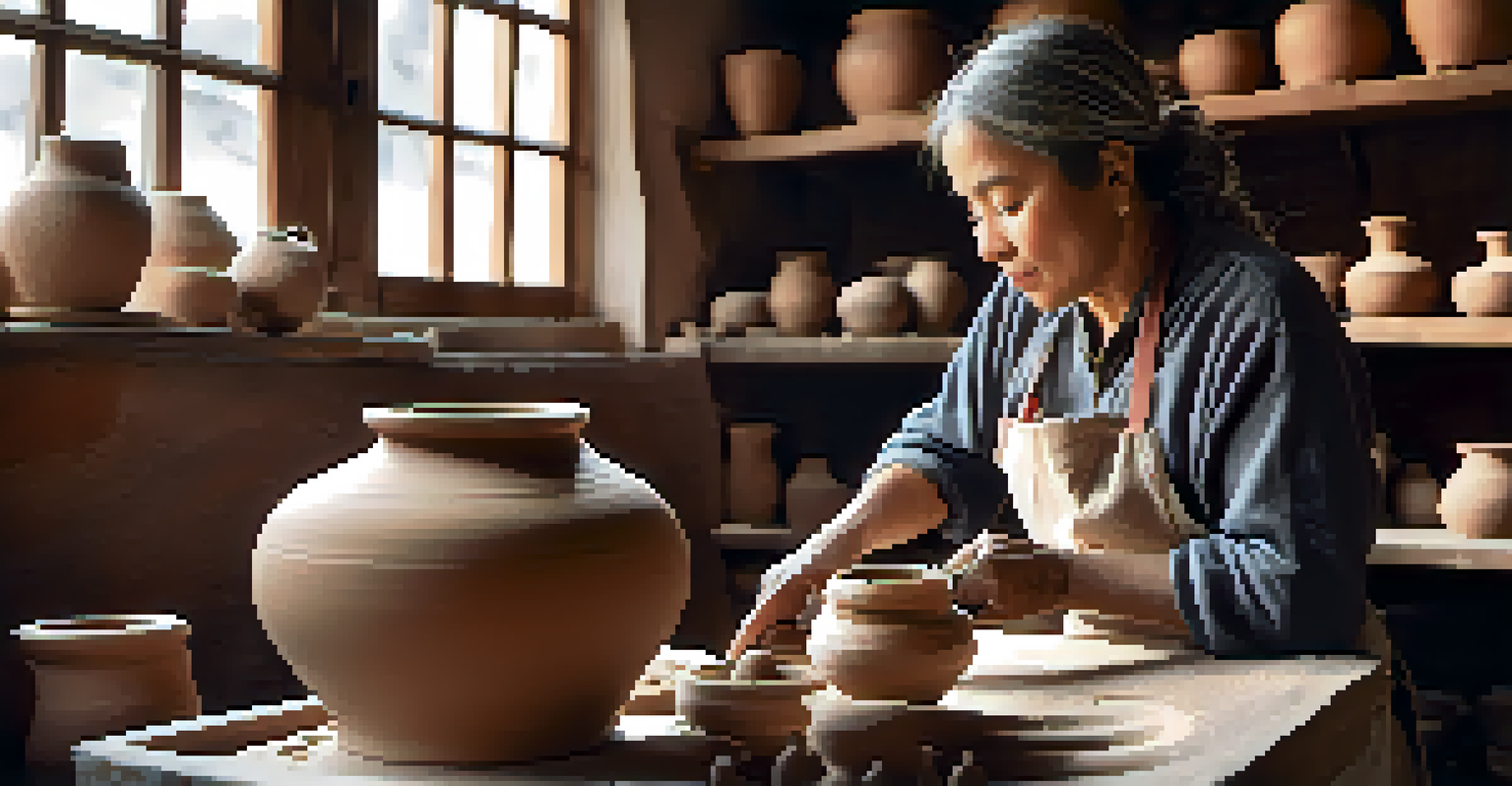Creating Stunning Travel Photography: Tips for Adventurous Shots

Understanding Your Gear: The Basics of Travel Photography
Before you embark on your travel photography journey, getting familiar with your gear is crucial. Whether you’re using a DSLR, a mirrorless camera, or even your smartphone, understanding its settings will help you capture stunning images. Take some time to learn about exposure, aperture, and shutter speed; these elements are the foundation of great photography.
Photography is the story I fail to put into words.
For instance, knowing how to adjust your aperture can create beautiful depth of field, making your subject stand out against a blurred background. Additionally, familiarize yourself with the different modes your camera offers, like portrait or landscape, which can enhance your shots depending on the scenery. Don't forget to pack a sturdy tripod; it’s a game-changer for low-light situations.
Ultimately, the better you know your equipment, the more confidence you'll have when capturing spontaneous moments. Remember, the most expensive gear won’t make you a great photographer; understanding how to use what you have is what truly matters.
Composing Your Shot: The Art of Framing
Composition is the backbone of any compelling photograph. Techniques like the rule of thirds can help you create balance and interest in your travel photos. Imagine splitting your frame into a grid of nine equal parts; placing key elements along these lines or at their intersections can lead to more dynamic images.

Another useful tip is to lead the viewer’s eye with leading lines, such as roads, rivers, or pathways. These elements naturally draw attention to your subject and create a sense of depth. Don't hesitate to experiment with different angles and perspectives; sometimes, the best shot comes from an unexpected viewpoint.
Know Your Gear for Great Shots
Familiarizing yourself with your camera's settings and features is essential for capturing stunning travel photographs.
Lastly, remember to include some negative space in your compositions. This simple technique can highlight your main subject and evoke a sense of tranquility, making your photographs even more captivating.
Lighting Matters: How to Use Natural Light to Your Advantage
Natural light can make or break your travel photos, so understanding how to work with it is essential. The golden hour, which occurs shortly after sunrise and before sunset, provides soft, warm light that can make your images glow. Aim to schedule your shoots during these times for the most flattering results.
The best thing about a picture is that it never changes, even when the people in it do.
Avoid shooting in harsh midday sun, as it can create unflattering shadows and overexposed highlights. If you must shoot during this time, look for shaded areas or use a diffuser to soften the light. You can also harness the power of backlighting by positioning your subject between the camera and the sun for a dramatic effect.
Lastly, don't be afraid to experiment with artificial light sources, like flash or reflectors, to enhance your shots. A well-placed light can add dimension and drama, making your travel photography even more striking.
Capturing Emotion: The Power of Storytelling in Photography
Every great travel photograph tells a story, capturing emotions that resonate with viewers. To evoke feelings, look for candid moments that reflect the essence of a place or the spirit of its people. For example, capturing a local’s joyful smile or a child playing can convey the heart of a destination in a single frame.
Think about the context of your shots as well; including elements that show culture, tradition, or daily life can add depth to your images. This approach transforms your photos from mere snapshots into compelling narratives that invite the audience to experience the journey with you.
Master Composition Techniques
Using techniques like the rule of thirds and leading lines can significantly enhance the visual interest of your photos.
Remember, the more emotion you can convey in your photography, the more connected your audience will feel to your experiences. So, keep your camera ready and stay open to unexpected moments that unfold around you.
Post-Processing: Enhancing Your Images with Editing
Post-processing is an essential step in travel photography that can elevate your images from good to stunning. Software like Adobe Lightroom or Photoshop offers a variety of tools for enhancing color, contrast, and sharpness. Don’t be afraid to experiment with filters and presets, but always strive for a natural look that maintains the authenticity of your travel experience.
Start with basic adjustments, such as cropping and straightening your images, which can significantly improve composition. Next, play around with exposure and color balance to bring your images to life. Just remember, the goal of editing is to enhance the story you captured, not to completely alter it.
Lastly, consider creating a consistent editing style across your travel photos for a cohesive look. This can help establish your personal brand and make your work instantly recognizable, whether you’re sharing on social media or showcasing in a portfolio.
Staying Safe While Shooting: Tips for Adventurous Photographers
While capturing stunning travel photos is exhilarating, safety should always be a priority. Before venturing out with your camera, research the area you plan to explore. Understanding local customs, weather conditions, and potential hazards will help you prepare and avoid dangerous situations.
When photographing in crowded places, keep an eye on your belongings and consider using a strap to prevent accidental drops. It's also wise to avoid showcasing expensive gear in unfamiliar environments, as it may attract unwanted attention. Instead, opt for a versatile lens that allows you to capture a variety of shots without drawing too much attention.
Emphasize Safety While Shooting
Prioritizing safety by researching locations and protecting your gear ensures a more enjoyable photography experience.
Lastly, trust your instincts; if a situation feels uncomfortable, don’t hesitate to walk away. Your safety is paramount, and there will always be another opportunity to take that perfect shot.
Sharing Your Work: Building a Community Around Your Photography
Once you've captured stunning travel photographs, it’s time to share your work with the world. Platforms like Instagram, Pinterest, and photography blogs offer fantastic avenues for showcasing your images and connecting with fellow enthusiasts. Use relevant hashtags to increase visibility and engage with your audience by responding to comments and messages.
Consider joining online photography communities or local meetups to exchange ideas and gain inspiration. Collaborating with other photographers can lead to valuable feedback and new perspectives on your work. Sharing tips and tricks not only enhances your skills but also fosters a sense of community.

Finally, don’t forget to create a portfolio to display your best work. This can serve as a powerful tool for attracting clients or even securing opportunities in travel photography, ensuring your adventures continue to inspire others.